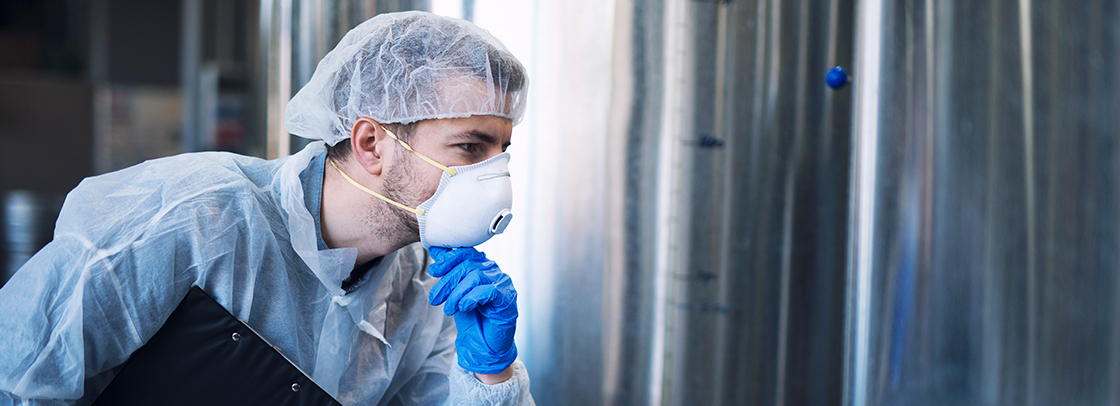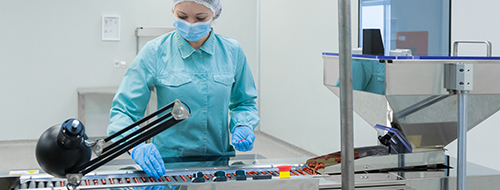
― Let’s Explore the Vital Role of GMP Principles in Cultivating a Healthy Lifestyle in Pharma Plant Processes ―
What is the master key that provides safe medications to the public? A mandate adherence to GMP principles. Embracing GMP principles upholds the highest standards of safety and quality in producing pharmaceuticals.
Adherence to these safety standards is crucial to producing safe medications. This helps bring great reliability to patients. It aids the manufacturers in minimizing the adverse effects that come from contamination and manufacturing errors.
The consequences of not following the safety measures can be severe which can range from compromising the patient’s well-being to tarnishing the industry’s reputation.
By following 10 basic GMP principles, any manufacturer will be committed to the well-being of patients and will be able to earn great credibility from all nations. Let’s dive deep into learning about each principle and how it allows us to move towards consistent and safe production.
Principle 1- Proper Design and Construct of Facilities
Principle one of GMP guidelines highlights the sense of designing and constructing facilities to focus on preventing contamination. This principle lays down the foundation for producing effective medications by designing the facility and equipment in such a way that it prevents all kinds of risk of contamination.
- It involves the maintenance of a clean and sustainable environment by keeping the surface smooth and nonporous.
- It helps prevent cross-contamination by promoting to segregation of different areas for different equipment.
- An adequate ventilation system is kept in place to keep control of the quality and spread of airborne containments.
- Equipment calibration ensures consistent performance of all equipment that allows the manufacturer to not compromise on product quality.
Principle 2- Written Procedures and Instructions
This principle gives us step-by-step instructions with the right procedures, especially written down to produce medications. Detailed instructions are needed for each process to get the desired quality, which is needed in the finished product. Thus, the following set of instructions makes sure each medicine produced is as safe and effective as the one before. This principle involves-
- Consistently following procedures ensures each batch of medicine is made similarly to the previous one for the expected results.
- It implicates the tracking of different or new changes that are added to see the impact on quality.
Principle 3- Document work
This principle emphasizes on the importance of documentation related to production processes in a clear and precise manner. It is similar to record-keeping about manufacturing medicines of each batch. This encourages troubleshooting while keeping the process intact with quality control. This involves-
- Accurate documentation provides a traceable record of all the processes to make sure they are rightly followed.
- Organizing the data helps check and review whether the production processes are compliant with regulations or not.
- It helps track any issues and improvements to ensure medicine is consistingly produced in high quality.
- It also serves to maintain quality control and helps address any concern related to specific batch production.
Principle 4- Validate Work
This principle focuses on procuring effective medicines that are tested and proven to work correctly for all patients. By validating the work, it ensures the methods and procedures are effective and reliable. Manufacturers become confident in their processes by following this principle to meet the necessary quality standards. It involves-
- Performing tests to confirm that medicines are reliable and give consistent and desirable results.
- It checks the equipment, processes and ingredients work correctly.
- With continuous reviews and updates, it promotes the manufacturer to meet the latest standards of quality assurance.
Principle 5- Material Management

This principle shows the integrity of maintaining raw materials and finished products throughout the entire manufacturing process. It involves the handling of stored and used materials to prevent contamination by following a systematic process. This is done by
- Physical manipulation of materials during various stages of the production process.
- It preserves the quality of the materials by carefully handling them to prevent physical damage and exposure to adverse conditions.
- Proper storage conditions such as temperature and humidity control help me with the required specifications.
- It also ensures to use of the materials within their specified shelf life to prevent degradation.
Principle 6- Design, Develop and Demonstrate Job Competence
This principle encourages the importance of keeping a well-trained and competent workforce in Pharma manufacturing. It works to enhance the quality, safety and efficiency of production plants. This is achieved by appropriately choosing skilled and suitable people with suitable roles and responsibilities to achieve great success in the market. It involves-
- Hiring individuals with proper qualifications, knowledge, and experience that align with their roles.
- Personnel that are well-equipped to perform their task effectively contributes to the success of the manufacturing plant.
- It also helps reduce the likelihood of errors for promoting a smooth workflow.
- It encourages maximizing the utilizing capabilities of new technology’s regulations and best practices to ensure good production yield.
Principle 7- Protection Against Contaminants
This principle focuses on maintaining a clean and hygienic environment in the plant. Cleanliness is a fundamental factor that cannot be ignored to keep the medications of the highest standard. Hence, it underscores the importance of cleanliness as a proactive measure that mitigates the risk of contamination and, thus, the frequency of defects. This involves-

- Taking measures to avoid the entrance of harmful substances or microorganisms that may enter into the manufacturing process.
- Monitoring sanitization to prevent cross-contamination among different types of equipment.
- Using HEPA filters to maintain a regular cleaning schedule for a clean room environment.
- It involves validation studies for eliminating residues and contaminants to meet predetermined cleanliness standards.
Principal 8- Writing step-by-step Operating Procedures
This principle involves describing a clear and detailed picture of operating procedures to maintain quality management. This principle induces a constant consistency in adhering to safety and quality standards in a proper framework. This results in continuous improvement and benefits the organization in improving performance while minimizing resource wastage. It involves-
- It depicts clear and straightforward language to ensure easy instructions are conveyed at every step of production.
- It includes the specifications related to quantities, measurements, equipment, and critical parameters to be kept in mind for safe protection.
- It highlights the clear outline of equipment setup calibration and special considerations.
- Implementing this turns the plant system into a robust control system to manage revision updates related to its operating system.
Principle 9- Controlling Processes for Product and its Components
This principle stresses on building a systematic approach to managing and overseeing all aspects of manufacturing related to the products. It is crucial to instil quality through the integrity of pharmaceutical products. Thus, by preventing deviations, manufacturers can meet the regulatory standards by taking various measures against it. This involves-
- Keeping a strong eye on the key parameters significantly affects the quality criteria defined for production.
- It implements checks and controls during various stages of production to identify deviations for immediate correct actions.
- It helps document any changes related to production material or equipment processes.
- It also involves automated systems for continuous monitoring to control critical process parameters to ensure product quality.
Principal 10- Conducting Planned and Periodic audits.

This last principle is a final check for identifying whether continuous adherence is done to all the GMP principles or not. By reviewing and analyzing all the processes and systems through self-inspection and audits, this final step helps the manufacturers evaluate product effectiveness. The involves-
- To address the issues through self-inspections that often reveal weak areas that impact product quality.
- It confirms whether the processes are welcome blind with GMP principles and industry regulations are not.
- It reduces the risk of manufacturing defects final product.
- It fosters a culture of continuous improvement for quality among personnel.
Conclusion
Good manufacturing practice ( GMP ) serves as the backbone of pharma companies to establishes a robust system that prioritizes safety of patients. These principles ensure every process is regulated with corrective actions. The ten basic principles cover a wide range of essential aspects that help pharma companies elevate the scalability in their production process. Unimarck Pharma is one of those reputed companies that has laid the foundation to adhere to all the regulatory and industrial standards. Through this, we have uplifted many small businesses by providing them with the safest and most effective medications.
